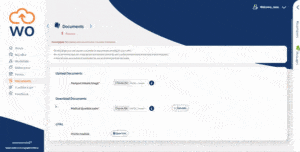Onboarding is a popular modern business technique to engage new members of staff. You can use it to introduce them to your business, their colleagues, and the specifics of their job.
The reason for doing so is because staff turnover can have a negative impact on your business.
Failing to properly introduce new starters to your business can lead to a lack of proper integration, which may lead to a lower retention rate.
So, how can you make sure you have a proper process in place? Let’s start with the basics.
What’s onboarding?
It’s the process where new employees gain the skills, knowledge, and behaviours that’ll make them successful members of staff in your business.
In other words, it’s about orientating new starters into your business—it helps them to hit the ground running, as it were.
You can use your onboarding process to inform your new employee about:
- Your company culture.
- The job functions they’ll be undertaking.
- Your rules and regulations.
- Your procedures, such as your fire evacuation process.
A common way to approach the above is with an induction day, which you can perform with multiple new starters simultaneously.
That can save time, as opposed to training each new employee individually. Instead, you’re able to educate them about your business all in one group.
Why use onboarding?
In the recent past, it was common for businesses to simply let a new starter arrive and then get on with their job.
A brief tour around the office, for example, with an introduction to the rest of your staff may have occurred. But then they often simply had to fend for themselves.
Modern businesses are increasingly aware this isn’t a sound business strategy.
For a start, it misses out on the training elements of employee competency. If you, metaphorically, hurl your new member of staff into their job with no training it’ll take longer for them to understand everything they need to do.
Other reasons to have a process are so new starters:
- Can meet their colleagues in a more informal manner, rather than just through professional needs.
- Get an understanding of the values in your business (company culture etc.).
- Can have a smooth transition into the new role, which can help them to feel more welcome—and so they have a greater sense of purpose.
- Understand work expectations from day one.
- Find out about job training opportunities and prospects for career progression at a later date.
So, in short, your onboarding can provide a confidence boost and the fundamental training required to make their first few months more productive.
Onboarding benefits for your business
In the long-term, it can save your business a great deal of money. And it can do this in the following ways:
- Increasing retention rates: The likelihood of employees staying on due to an onboarding process are a lot higher. With a more thorough introduction to your business, they’ll have more confidence in their role—and that will ensure they flourish, rather than fade away through lack of training.
- Improved reputation: Through word of mouth or on review sites such as Glassdoor, your care and attention to the employee experience will spread. This can make talented professionals interested in working for you.
- Increase the time to maximum productivity: Rather than faffing about lost for the first few months of their probation period, you’ll instead have helped your new starter understand the basics. And that means they’ll be up to speed much faster than without an onboarding process.
And, of course, you’ll also save money in the long run. For example, with your recruitment costs.
The more employees remain with your business as they’re happy, the less budget you’ll have to expend on hiring new employees.
Onboarding costs
Although a process will save you money in the long-term, there are some immediate costs to setting up—and maintaining—your procedures.
Review site Glassdoor covers these in The Hidden Costs of Onboarding a New Employee. These include:
- The paperwork and administrative time you need to establish, and maintain, your process.
- The loss of time and money in the event employees leave early, regardless of your onboarding process.
- If you’re being particularly generous with, for example, a laptop per new starter and other benefits for a positive onboarding process, these costs can add up.
However, you can always refine your approach as you get to understand it more, which can iron out any flaws—that can address the likes of new starters leaving while still on probations.
Onboarding technique examples
There are certain steps you can take to make sure your induction day achieves the desired results. You can consider the following options:
- Mentoring: Have a manager or executive assisting with the daily activities of your new starter. This will include regular daily assistance to ensure they can develop their skills while on the job.
- Reading assignments: This might be a company handbook or a specific self-help book to help the individual advance their knowledge faster.
- Induction days: You can use these to provide a tour through all of the essential requirements of your daily business life. This can include a tour of your premises, meeting colleagues, and running through your procedures.
- eLearning opportunities: Use educational courses for the new starter to complete, so they can advance on the job.
- Shadowing managers: By following, and studying, other employees the new employee can gain an understanding of what life is like in your business.
- Social activities: You can involve them in any social events you have planned so they can get to know your team.
Of course, you can adapt your procedure to whatever you feel is necessary.
Every business is different, so you may want to run a company audit, speak to employees, and get an understanding of what you think will work for your business.




